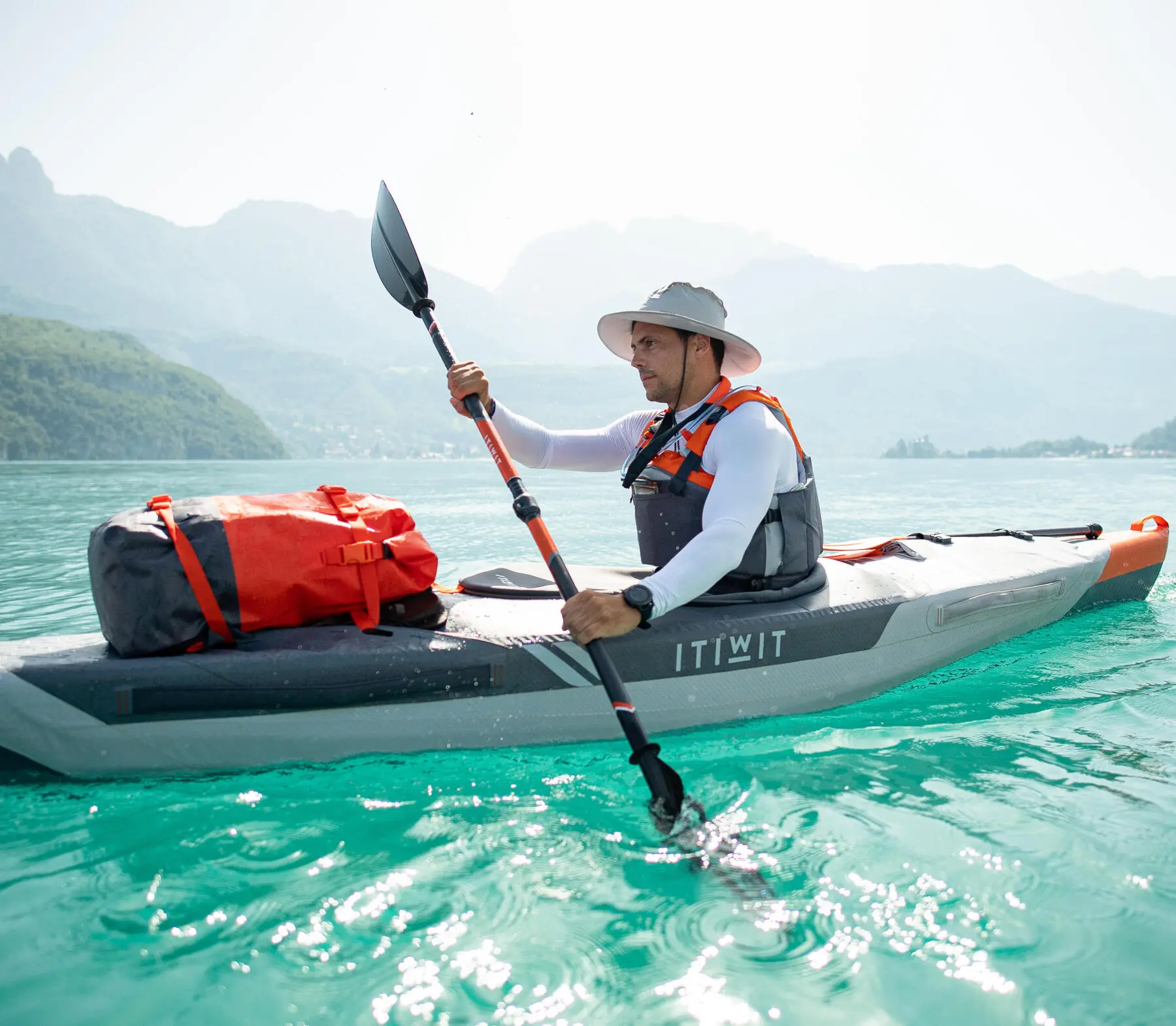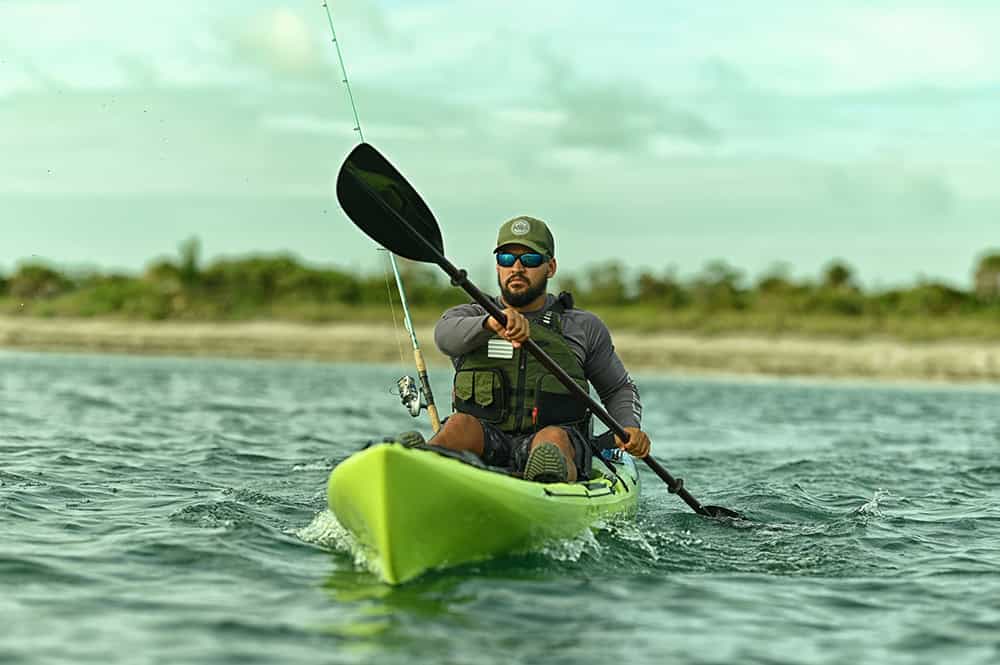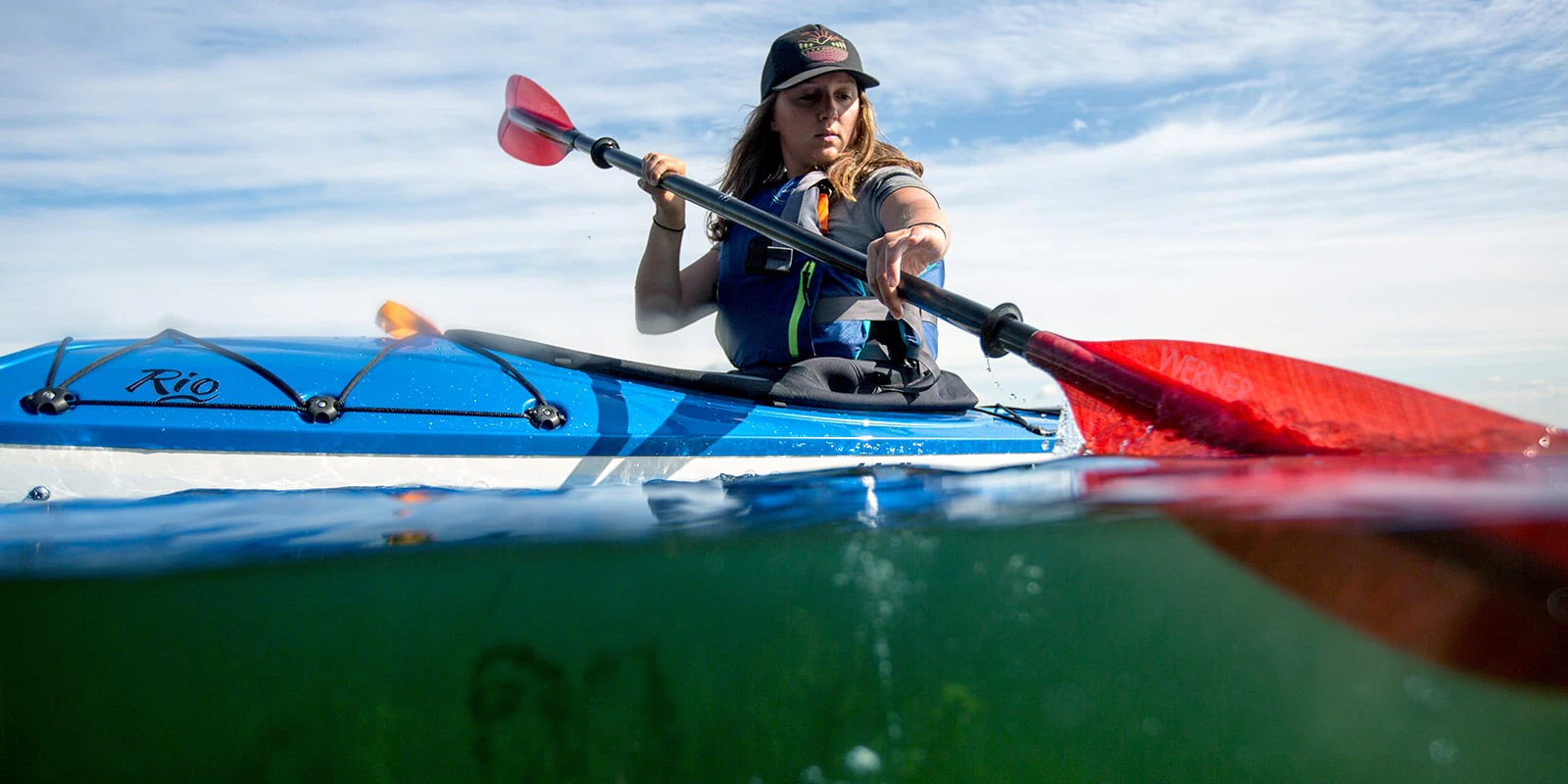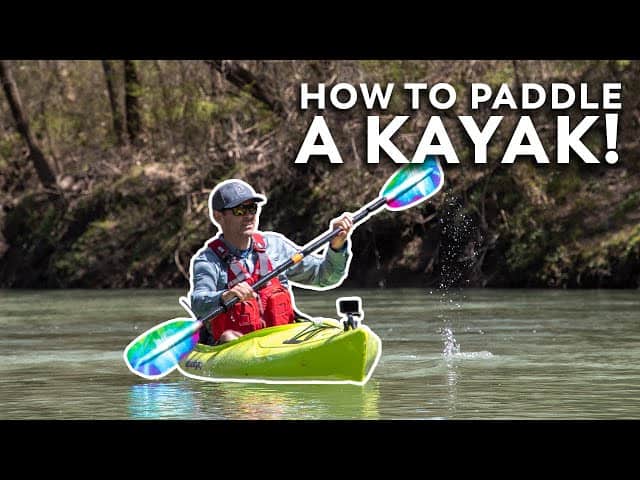Kayaking is a thrilling and adventurous water sport that allows individuals to explore the beauty of nature while getting a great workout. As an avid kayaker myself, I understand the importance of knowing how to paddle a kayak properly and safely. That’s why I have created this comprehensive guide to help beginners get started on their kayaking journey.
Key Takeaways
- Before starting kayaking, it’s important to understand the basics and choose the right kayak and gear.
- Basic kayaking techniques include paddling, turning, and maneuvering your kayak.
- Safety should always be a top priority when kayaking, including wearing a life jacket and knowing how to handle emergencies.
- Planning your kayaking trip involves choosing a route and preparing for the journey, including checking weather and water conditions.
- Kayaking can be a fun and rewarding lifestyle, but it’s important to respect the environment and other kayakers while on the water.
Introduction to Kayaking: What You Need to Know Before You Start
Before diving into the world of kayaking, it’s essential to understand the numerous benefits it offers. Not only does kayaking provide an excellent cardiovascular workout, but it also allows you to connect with nature in a unique way. The tranquility of gliding through calm waters or the adrenaline rush of navigating rapids can be incredibly therapeutic.
There are different types of kayaks available in the market, each designed for specific purposes such as recreational paddling, touring, or whitewater adventures. Understanding basic kayak anatomy is crucial before choosing your first kayak. Familiarize yourself with terms like bow (front), stern (back), cockpit (where you sit), and hull (the bottom part).
Want to learn more about paddles? Read more at Paddles.top!
Choosing the Right Kayak: A Guide to Kayak Types and Features
Choosing the right kayak can make all the difference in your paddling experience. Factors such as your skill level, intended use, and budget should be considered when making this decision.
Recreational kayaks are perfect for beginners as they offer stability and ease of maneuverability on calm waters like lakes or slow-moving rivers. Touring kayaks are designed for longer trips and offer more storage space for gear while maintaining stability in various water conditions.
When selecting a kayak, pay attention to its material composition too – common options include plastic (durable but heavy), fiberglass (lightweight but expensive), or inflatable (portable but less durable).
Essential Gear for Kayaking: What to Pack for a Safe and Comfortable Trip
| Essential Gear for Kayaking | Description |
|---|---|
| Kayak | A small, narrow watercraft that is propelled by a double-bladed paddle. |
| Paddle | A double-bladed paddle used to propel the kayak through the water. |
| Personal Flotation Device (PFD) | A life jacket that is worn to keep the kayaker afloat in case of an accident. |
| Sunscreen | A lotion or spray that is applied to the skin to protect it from the sun’s harmful rays. |
| Sunglasses | Glasses that protect the eyes from the sun’s glare and harmful UV rays. |
| Waterproof Bag | A bag that is designed to keep items dry even when submerged in water. |
| Water Bottle | A container used to hold water or other beverages for hydration during the trip. |
| First Aid Kit | A kit that contains basic medical supplies for treating minor injuries. |
| Whistle | A small, loud instrument used to signal for help in case of an emergency. |
| Navigation Tools | Tools such as a map, compass, or GPS device used to navigate and stay on course. |
Safety should always be a top priority when kayaking. Before embarking on any adventure, ensure you have the necessary safety gear. This includes a personal flotation device (PFD), which is essentially a life jacket that will keep you buoyant in case of an accident.
Appropriate clothing and footwear are also crucial for comfort and protection. Opt for quick-drying materials that provide insulation even when wet, such as neoprene or synthetic fabrics. Don’t forget to pack enough food and water to stay hydrated throughout your trip.
Navigation tools like a compass or GPS can help you stay on course, especially if you’re exploring unfamiliar waters. Other essential items include a first aid kit, sunscreen, and a whistle for signaling in case of emergencies.
Basic Kayaking Techniques: How to Paddle, Turn, and Maneuver Your Kayak
Mastering basic kayaking techniques is essential for efficient paddling and maneuvering your kayak with ease. Start by learning the proper paddling technique – hold the paddle with both hands shoulder-width apart while keeping your arms slightly bent.
To turn your kayak smoothly, use sweep strokes by extending one arm outwards while rotating your torso in the direction you want to go. For sharper turns or quick maneuvers, utilize draw strokes by pulling the paddle towards yourself alongside the kayak’s hull.
Stopping your kayak can be achieved by using reverse strokes – simply paddle backward with short but powerful strokes until you come to a halt.
Safety Tips for Kayaking: How to Stay Safe on the Water
Safety should always be at the forefront of every kayaker’s mind. Before heading out onto the water, it’s crucial to take certain precautions that will minimize risks during your trip.
Firstly, always check weather conditions before setting off as strong winds or storms can make kayaking dangerous. It’s also important to inform someone about your planned route and estimated return time so they can raise an alarm if you don’t return as expected.
Carrying a whistle and knowing how to use it can be a lifesaver in case of emergencies. Additionally, practicing self-rescue techniques such as re-entering your kayak after capsizing is essential knowledge for every kayaker.
Planning Your Kayaking Trip: Choosing a Route and Preparing for the Journey
Planning your kayaking trip is crucial to ensure a smooth and enjoyable experience. Start by considering factors such as the difficulty level of the route, distance, and estimated time required to complete it.
Researching the area you plan to kayak in will help you identify any potential hazards or points of interest along the way. It’s also important to check if there are any permits or regulations that need to be followed.
Preparing for your journey involves packing all necessary gear, including food, water, safety equipment, and navigation tools. Make sure everything is securely stored in waterproof bags or containers to protect them from getting wet.
Advanced Kayaking Techniques: How to Navigate Rapids and Waves
For those seeking more adrenaline-pumping adventures on the water, learning advanced kayaking techniques is essential when navigating rapids and waves.
Navigating rapids requires precise maneuvering skills combined with an understanding of how water flows through different channels. Learning how to read water – identifying eddies (calm areas behind rocks), waves (standing waves caused by obstacles), or hydraulics (water recirculating back into itself) – will help you choose the best path through rapids.
Safety precautions become even more critical during advanced kayaking adventures. Wearing protective gear like helmets becomes necessary when dealing with rough waters that may contain hidden rocks or other obstacles that could cause injury.
Kayaking in Different Water Conditions: Tips for Calm and Rough Waters
Kayakers often encounter various water conditions ranging from calm lakes to rough seas or fast-flowing rivers. Adapting your technique to different water conditions is crucial for a safe and enjoyable experience.
In calm waters, focus on maintaining a steady rhythm with your paddling strokes. Keep your movements smooth and relaxed to maximize efficiency. In rough waters, it’s important to brace yourself against the waves by using low braces or high braces to maintain stability.
Adjusting your technique also involves understanding how wind and currents affect your kayak’s movement. Learning how to use these natural forces to your advantage can make paddling in challenging conditions more manageable.
Kayaking with Others: How to Communicate and Work as a Team
Kayaking with others can be an incredibly rewarding experience, but effective communication and teamwork are essential for a successful trip.
Establishing clear communication signals before setting off is crucial for ensuring everyone stays together and remains safe on the water. Simple hand signals like pointing in a direction or raising an arm can convey important messages without the need for verbal communication.
Working as a team involves coordinating movements when navigating obstacles or rapids. By observing each other’s actions, you can anticipate their next move and adjust accordingly, ensuring everyone stays in sync throughout the journey.
Kayaking Etiquette: How to Respect the Environment and Other Kayakers
Respecting both the environment and fellow kayakers is of utmost importance when engaging in this sport. As kayakers, we have a responsibility to minimize our impact on nature while enjoying its beauty.
Avoid disturbing wildlife by keeping noise levels low and maintaining distance from nesting areas or sensitive habitats. Dispose of any waste properly by packing out what you pack in – leaving no trace behind ensures that future generations can enjoy these pristine environments too.
When encountering other kayakers or boaters on the water, practice proper etiquette by yielding right of way when necessary, maintaining appropriate distances between vessels, and being mindful of wake created by motorized boats that could capsize smaller crafts like kayaks.
Kayaking as a Lifestyle: How to Incorporate Kayaking into Your Daily Routine
Kayaking is not just a sport; it can become a fulfilling lifestyle that brings joy and fulfillment. Incorporating kayaking into your daily routine may seem challenging, but with proper planning and dedication, it’s possible.
Finding time for kayaking can be as simple as waking up early to catch the sunrise on the water or dedicating weekends to exploring new waterways. Joining local kayaking clubs or groups can also provide opportunities to meet like-minded individuals who share your passion for this exhilarating sport.
Staying motivated is key when making kayaking a part of your lifestyle. Set goals for yourself, whether it’s completing longer trips or mastering advanced techniques. Celebrate small achievements along the way and remember why you fell in love with kayaking in the first place.
In conclusion, this comprehensive guide provides beginners with all the necessary information to start their kayaking journey safely and confidently. From choosing the right kayak and gear to mastering essential techniques, staying safe on the water, and respecting both nature and fellow paddlers – every aspect of this thrilling sport has been covered.
So don’t hesitate any longer – grab a paddle, find your perfect kayak, and embark on an adventure that will bring you closer to nature while providing endless excitement and fulfillment. Happy paddling!
FAQs
What is kayaking?
Kayaking is a water sport that involves paddling a small boat called a kayak through water using a double-bladed paddle.
What are the different types of kayaks?
There are several types of kayaks, including recreational kayaks, touring kayaks, whitewater kayaks, sit-on-top kayaks, and inflatable kayaks.
What equipment do I need for kayaking?
The essential equipment for kayaking includes a kayak, paddle, personal flotation device (PFD), and appropriate clothing and footwear. Other optional equipment includes a spray skirt, helmet, and dry bag.
What are the basic paddling techniques for kayaking?
The basic paddling techniques for kayaking include the forward stroke, reverse stroke, sweep stroke, draw stroke, and brace stroke.
What are some safety tips for kayaking?
Some safety tips for kayaking include wearing a PFD at all times, checking weather and water conditions before heading out, staying hydrated, avoiding alcohol and drugs, and staying within your skill level.
What are some popular kayaking destinations?
Some popular kayaking destinations include the Grand Canyon, Yellowstone Lake, the Florida Keys, the San Juan Islands, and the Apostle Islands.





